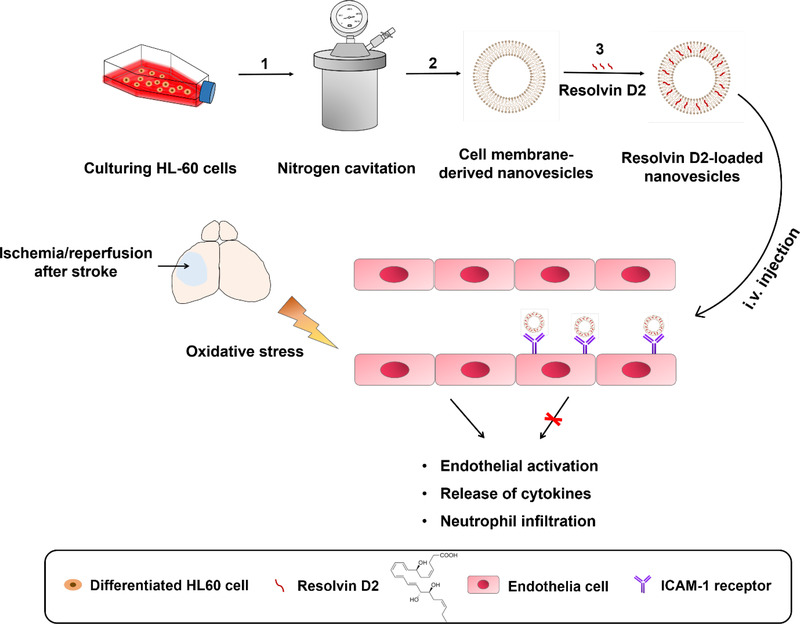Figure 1.
Schematic shows the design on Resolvin D2 loaded-nanovesicles (RvD2-HVs) that specifically bind to inflamed brain endothelium to mitigate neuroinflammation after reperfusion therapy of ischemic stroke. Generation of RvD2-HVs follows three steps: 1) nitrogen cavitation breaks cells to form nanovesicles; 2) purification of nanovesicles through a series of centrifugations; 3) loading RvD2 in nanovesicles. After intravenous (i.v.) administration, RvD2-HVs can specifically bind to inflamed brain endothelium in stroke lesions to increase delivery of RvD2 that can enhance inflammation resolution, such as inhibition of endothelial activation, cytokine release and neutrophil infiltration in ischemic sites of brain.

